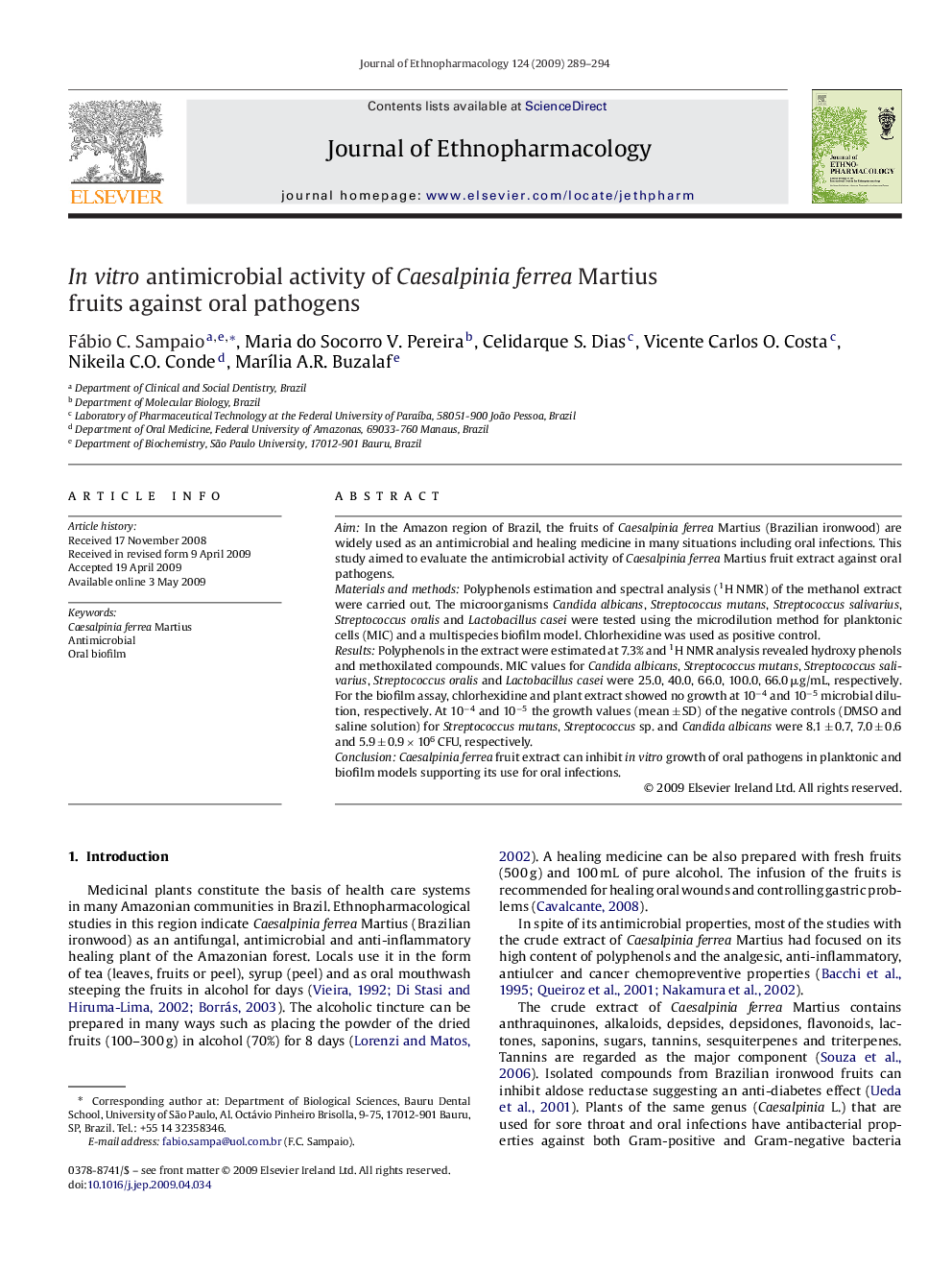| Article ID | Journal | Published Year | Pages | File Type |
|---|---|---|---|---|
| 2547121 | Journal of Ethnopharmacology | 2009 | 6 Pages |
AimIn the Amazon region of Brazil, the fruits of Caesalpinia ferrea Martius (Brazilian ironwood) are widely used as an antimicrobial and healing medicine in many situations including oral infections. This study aimed to evaluate the antimicrobial activity of Caesalpinia ferrea Martius fruit extract against oral pathogens.Materials and methodsPolyphenols estimation and spectral analysis (1H NMR) of the methanol extract were carried out. The microorganisms Candida albicans, Streptococcus mutans, Streptococcus salivarius, Streptococcus oralis and Lactobacillus casei were tested using the microdilution method for planktonic cells (MIC) and a multispecies biofilm model. Chlorhexidine was used as positive control.ResultsPolyphenols in the extract were estimated at 7.3% and 1H NMR analysis revealed hydroxy phenols and methoxilated compounds. MIC values for Candida albicans, Streptococcus mutans, Streptococcus salivarius, Streptococcus oralis and Lactobacillus casei were 25.0, 40.0, 66.0, 100.0, 66.0 μg/mL, respectively. For the biofilm assay, chlorhexidine and plant extract showed no growth at 10−4 and 10−5 microbial dilution, respectively. At 10−4 and 10−5 the growth values (mean ± SD) of the negative controls (DMSO and saline solution) for Streptococcus mutans, Streptococcus sp. and Candida albicans were 8.1 ± 0.7, 7.0 ± 0.6 and 5.9 ± 0.9 × 106 CFU, respectively.ConclusionCaesalpinia ferrea fruit extract can inhibit in vitro growth of oral pathogens in planktonic and biofilm models supporting its use for oral infections.
Graphical abstractFigure optionsDownload full-size imageDownload as PowerPoint slide
